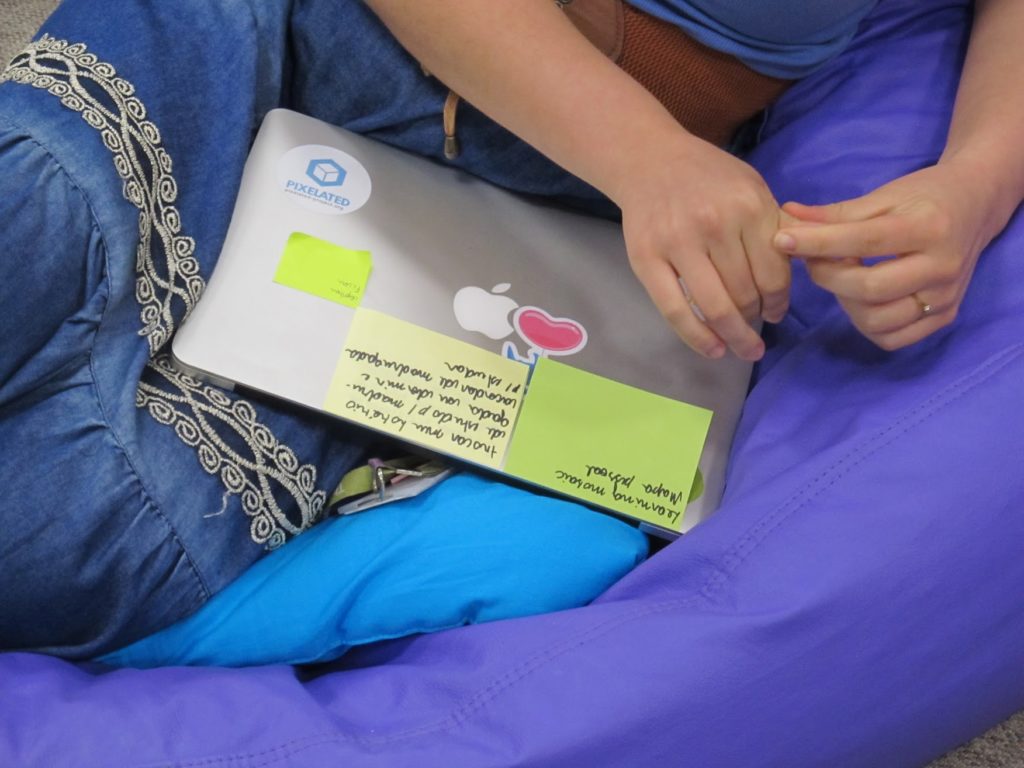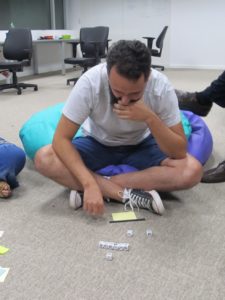by Yoris Linhares
Teaching a new brand concept can be a much easier task than revisiting tried and tested subjects. People don’t have any preconceptions and are eager to assimilate a new idea. In many cases, when you teach a new concept, resistance is minimal. Sounds easy? Actually it’s not always as straightforward as the above scenario.
Presenting new business ideas can also be a hard task, especially when you have participants from contrasting backgrounds, who have different interpretations of a similar concept or business model. As a facilitator it’s as important that you learn from your workshop participants, as they learn from you. When you present a new concept, you need honest feedback from people that are digesting the information for the first time.
Learning 3.0: a new concept
When ThoughtWorks in Belo Horizonte (Brazil) contacted me to help their creative workers understand the Learning 3.0 concept, I was aware that they expected me to come and teach. But, I would not be teaching anything.
Teaching Vs. Sharing
I decided that the workshop would not be about me standing up and teaching in the traditional sense, because often teaching is the core problem when presenting any new concept. I wouldn’t be telling them what they should learn and how they should learn it. On the contrary, I wanted to give the participants plenty of time and opportunity to digest what I was sharing with them.
Rather than avoiding a discussion about past practices, I wanted the participants to share their accepted methods and knowledge; to enrich our learning experience together. Finally, I wanted feedback and when you teach a brand new concept, it’s often hard to get valuable feedback to help improve the experience for future workshops.
How to spend three valuable hours
ThoughtWorks and I agreed we would dedicate three hours to Learning 3.0. They told me that around 7-10 people would participate and I would be able to take photographs to visually capture the experience. I came with my knowledge of Learning 3.0 and my facilitator tools and skills. What I didn’t come with was an agenda. I planned to ask one question only and let the learning emerge. Simple! After all, Learning 3.0 is about emergent learning.
Friendly chatter welcomed me, as I entered the workshop space. I had a good feeling about this! I invited the participants to sit in a circle and started to ask them what problems they were facing that propelled them to attend the session?

One by one they started to discuss their problems and also shared methods they used to handle different learning issues. The learning started to emerge. I was so encouraged by what was going on around me. People were engaged in the sharing of logic, experiences and problems. And this was motivated by my one question: “What is the problem?”
During the conversation my mind started to ponder on the best way to get the participants to absorb what they were learning and not to let it go. I decided to introduce a Learning Shot.
Take a shot. A Learning Shot.
Alexandre Magno, creator of Learning 3.0, says, “A Learning Shot is the best representation of Learning 3.0”. In his book, How Creative Workers Learn, he recommends the Learning Shot to promote emergent learning through collaboration and interaction amongst the participants.
I asked the group if I could jump into the conversation and to grab some stickies notes and pens. I tasked each one with writing down the problem they were faced with and we started on a Learning 3.0 exercise called, Problem Pitch: role, emotion, action, and why.
Each participant was asked to share what they had written and to pin it on the wall. We then set about writing down our desired scenario on sticky notes i.e. when the problem no longer existed. Once we had problems and desired scenarios, it was time for everyone to step in and share their experiences. They came up with lots of good experiences and ideas on how to solve the problems of others.

What emerged was a really cool and interactive storytelling session. And it had emerged without any prior planning involved! With problems stuck on the wall, experiences and solutions on sticky notes, the fun began. I grabbed my 9 “magic” dice, otherwise known as story cubes. Each side of the die has a different drawing, such as a cell phone, fish or moon. We took turns in throwing the dice and creating a story that would represent an ideal scenario for each of the problems listed. It was a great success!
At the end of our time together, I asked each participant to go to the wall where we had stuck the post-it notes and copy or take a picture of the experience or idea they would like to use in order to help them solve their problem. The agreed deal, was that once they had experimented with the solutions, they would share their experience with the rest of the group.
What did ThoughtWorks and I learn?
During our session we had covered: problematization, sensemaking (through future scenarios, experiences and ideas) and sharing. I asked the group to evaluate the difference between our emergent learning session and a traditional workshop/classroom style session. All the participants felt that traditional learning methods could in no way help them face today’s challenges. They had immensely enjoyed the flow of Learning 3.0 in action.
Since our session, the ThoughtWorks team provided feedback on their experience:
“The purpose of this learning formula is more ‘human’ and reflective. I realized when you think over something, it is easier to internalize it. You sum up your experiences with the experiences of other people and you get new conclusions about the subject at hand.”
“I have learned new techniques to help me in my self education and saw with a fresh pair of the obstacles I needed to overcome. It was very good!!”
“It is a much more intelligent way to approach learning. The highlight for me was the final part with the dice, some interesting results emerged.”
When you invite creative workers to discuss how to overcome problems around learning, they come up with experiences and ideas aligned with the principles and values of Learning 3.0. It makes sense in a complex world where you can find lots of information available for free and many ways to connect and share.
I have learned that we can use the flow of a Learning 3.0 session, to learn about the concept of Learning 3.0 itself and how it works in teaching new concepts.I also learned that having some agreed constraints with the participants, good facilitation skills and the right tools, are more important than having an agenda to follow. It confirmed that Alexandre is totally right:


Very interesting to see how fast (in a learning shot timeframe) they were able to catch the concept. Thanks for sharing Yoris. 🙂
The concept of Learning 3.0 is completely new to me, so this article definitely whetted my appetite for more. 🙂 I’m really amazed by the fact you went there “agendaless” and just let things unfold. And it apparently led to a valuable outcome!
Wow, I have so much to explore yet! 🙂
Thanks for inspiration!